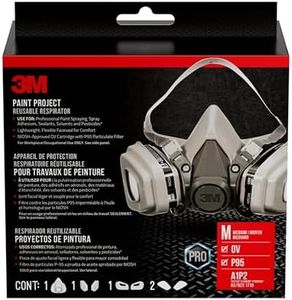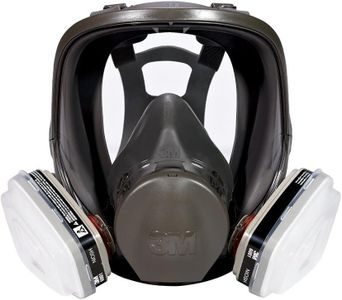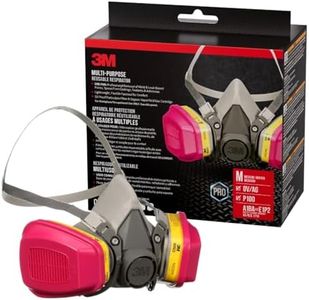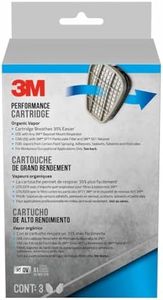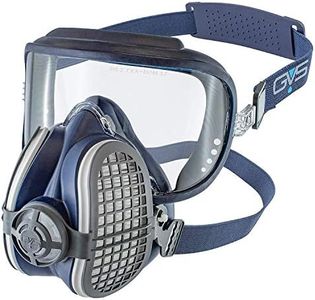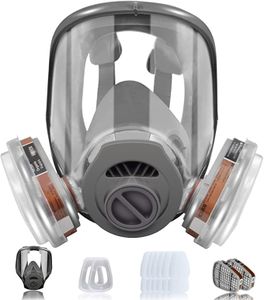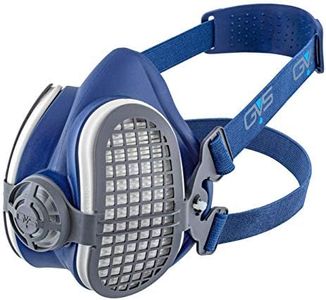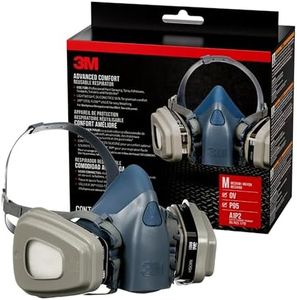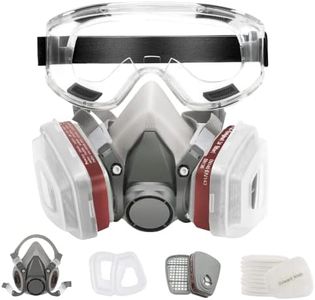We Use CookiesWe use cookies to enhance the security, performance,
functionality and for analytical and promotional activities. By continuing to browse this site you
are agreeing to our privacy policy
10 Best Paint Respirators
From leading brands and best sellers available on the web.Buying Guide for the Best Paint Respirators
Choosing the right paint respirator is essential for your health and safety when working with paint, varnish, or any substance that releases potentially harmful fumes or particles. A good respirator protects your lungs by filtering out dangerous substances in the air. Before buying, you should understand the main features and specifications to ensure you're adequately protected and comfortable for the duration of your work.Filter TypeThe filter type determines what kinds of particles or fumes the respirator will block. There are particulate filters (for dust and solid or liquid particles) and cartridges for fumes and gases. Filters are rated with letters and numbers (like N95 or P100), which indicate their efficiency and what they protect against. For example, 'N' means not oil-resistant, and '100' means it filters at least 99.97% of particles. If you're working mainly with dust, a particulate filter is usually sufficient, while paints with strong fumes need a chemical cartridge. Choose based on the hazards present in your work—check paint and chemical labels for guidance if unsure.
Respirator Type (Half-Face vs. Full-Face)Paint respirators mainly come in half-face or full-face styles. A half-face covers just the nose and mouth, providing breathing protection, while a full-face respirator also covers the eyes and face, protecting them from splashes and irritants. If your work involves only fumes and no risk of splashes or airborne droplets, a half-face is usually sufficient and more comfortable. For tasks with more exposure to irritating paints or where eye protection is needed, a full-face respirator gives better coverage.
Fit and ComfortA proper fit is crucial for a respirator to work effectively—it should form a tight seal around your nose and mouth or your whole face. Many respirators come in different sizes or have adjustable straps to accommodate various face shapes. Look for models with soft sealing edges and padded straps for maximum comfort, especially if you’ll wear it for long periods. Always try on different sizes or adjust the straps to test the seal before committing, and prioritize comfort if you'll be using the respirator frequently.
Filter ReplaceabilitySome respirators use replaceable filters or cartridges, while others are disposable and meant for short-term use only. Replaceable filters are more economical and eco-friendly if you plan to use your respirator regularly, while disposable options are simpler but not intended for long-term projects. Consider how often you will use the respirator and how easy it is to find and replace the filters when making your decision.
Breathability and Exhalation ValvesHow easily you can breathe through the mask is important, especially when working for long durations. Many respirators include exhalation valves that let out warm, moist air, helping to prevent fogging and overheating. If comfort and breathability are a concern, look for a respirator with a good exhalation valve and lightweight construction. This is especially crucial if you’ll be moving around a lot or working in a warm environment.
